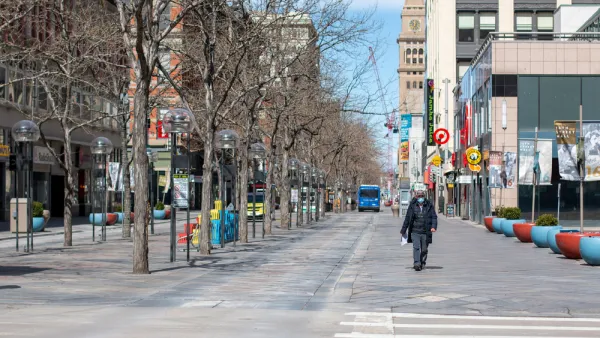Accounting for 45% of America's land mass and 30% of its population, the Great Plains, the Intermountain West, the Gulf states, and the Southeastern industrial belt are key to a national revival, says a new report from the Manhattan Institute.
Joel Kotkin summarizes a new report that he and his colleagues at the Manhattan Institute have published that points to the rising economic importance of four "growth corridors" in the United States: the Great Plains, the Intermountain West, the Third Coast (spanning the Gulf states from Texas to Florida), and the Southeastern industrial belt. "Historically," says Kotkin, "these regions were little more than resource colonies or low-wage labor sites for richer, more technically advanced areas. By promoting policies that encourage enterprise and spark economic growth, they're catching up."
"These regions have different histories and different trajectories into the future, but they share certain key drivers of economic growth: lower costs (particularly for housing); better business climates; and population growth. Some have benefited from the strong global market for commodities, particularly food, natural gas, and oil. Others are expanding because of a resurgence in manufacturing in the United States."
"To be sure, New York, Los Angeles, the San Francisco Bay Area, and Chicago will remain the country's leading metropolitan agglomerations for the foreseeable future," he acknowledges. "But an important urban story of the coming decades will be the emergence of interior metropolitan areas such as Houston, Dallas–Fort Worth, Tampa, Oklahoma City, and Omaha. On a smaller scale, fast-growing Lafayette (Louisiana), Baton Rouge, Midland (Texas), Sioux Falls (South Dakota), Fargo, and a host of other smaller cities will continue to expand. We may also witness the resurgence of New Orleans as a leading cultural and business center for the south and the Gulf Coast."
"The corridors' growing success is a testament to the resiliency and adaptability of the American economy," Kotkin concludes. "It also challenges the established coastal states and cities to reconsider their current high-tax, high-regulation climates if they would like to join the growth party."
FULL STORY: America's Growth Corridors: The Key to a National Revival - A New Report

Analysis: Cybertruck Fatality Rate Far Exceeds That of Ford Pinto
The Tesla Cybertruck was recalled seven times last year.

National Parks Layoffs Will Cause Communities to Lose Billions
Thousands of essential park workers were laid off this week, just before the busy spring break season.

Retro-silient?: America’s First “Eco-burb,” The Woodlands Turns 50
A master-planned community north of Houston offers lessons on green infrastructure and resilient design, but falls short of its founder’s lofty affordability and walkability goals.

Test News Post 1
This is a summary

Analysis: Cybertruck Fatality Rate Far Exceeds That of Ford Pinto
The Tesla Cybertruck was recalled seven times last year.

Test News Headline 46
Test for the image on the front page.
Urban Design for Planners 1: Software Tools
This six-course series explores essential urban design concepts using open source software and equips planners with the tools they need to participate fully in the urban design process.
Planning for Universal Design
Learn the tools for implementing Universal Design in planning regulations.
EMC Planning Group, Inc.
Planetizen
Planetizen
Mpact (formerly Rail~Volution)
Great Falls Development Authority, Inc.
HUDs Office of Policy Development and Research
NYU Wagner Graduate School of Public Service




























